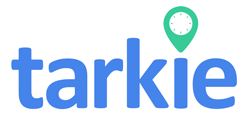Ever thought about how much your company loses due to attendance issues? Attendance management tools are more than digital clocks. They are key to spotting productivity gaps and boosting efficiency at work. In fast-paced places like the Philippines, these tools are vital for small to medium businesses.
They offer clear data and insights for better decisions. This makes a big difference in how businesses run.
These tools give real-time updates on who’s in and when. This helps find patterns in how employees work. It leads to a better work environment.
This article shows how attendance management systems solve big problems. They make workforces more efficient and improve business results.
Key Takeaways
- Understanding productivity gaps is essential for business success.
- Attendance management tools provide real-time data that improves efficiency.
- Streamlined attendance leads to better resource allocation.
- Implementing HR software can boost productivity by 25%.
- Data analytics in attendance management identifies peak productivity hours.
Understanding Attendance Management Tools
Attendance management tools are key software for businesses to track employee hours. They let employees clock in and out, giving real-time data on who’s working and who’s not. This helps managers spot any issues quickly.
In today’s fast world, knowing how to manage attendance is crucial. In the Philippines, using time tracking systems can save a lot of time. About 63% of companies see better results after switching to digital tools.
Biometric systems cut down on fake clock-ins by up to 90%. This saves a lot of money, as fake clock-ins cost businesses around $373 million each year. A good system also makes payroll more accurate, saving up to 25%.
Cloud-based systems have made tracking work hours easier. They make things more transparent, with 78% of companies seeing better results. The move to digital is key, as 55% of remote workers need better tracking.
Businesses that focus on attendance see a 15% boost in productivity. Using these tools with payroll can also cut costs by 20%. This shows how important these systems are for both efficiency and productivity.
Benefits of Using Attendance Management Tools
Attendance management tools bring big benefits to companies looking to boost their efficiency and productivity. They make tracking attendance easier and give access to real-time data. This is key for making fast decisions in a changing work world.
Real-time Data Accessibility
Having real-time data helps managers act fast on attendance issues. For example, tools like geofencing can automatically track when employees arrive and leave. This cuts down on mistakes that happen with manual tracking.
Managers can see right away who is there and who isn’t. This makes sure paychecks are correct and the company follows the law.
Integration with Other Systems
When attendance tools work with HR and payroll systems, things run smoother. This makes it easier to move data around and keeps attendance records consistent. Companies using tools like Tarkie’s attendance management software see a 25% boost in efficiency.
These tools also make sure data is accurate and reliable. This leads to a more open and responsible work environment.
How Attendance Management Tools Identify Productivity Gaps
Attendance management tools are key in finding productivity gaps by looking closely at attendance patterns. They help businesses track when employees start and end their work and how many breaks they take. This detailed attendance analysis shows important information about being on time and being engaged, which helps improve work productivity.
Analyzing Attendance Patterns
Employers use attendance tracking systems to spot trends in when employees show up. These systems help cut down on unplanned absences by 20-30%. This drop in absences makes the workplace more efficient. Companies see a 15% boost in productivity thanks to better time management and scheduling from accurate attendance data.
Seeing these patterns helps organizations improve how they engage employees. This can boost morale and performance.
Spotting Trends and Issues
Systems for managing attendance give detailed reports that show where productivity gaps are in up to 92% of companies. These reports help managers find out who is often absent or late. This can lead to looking into why, like if employees are happy or if they have a good work-life balance.
Also, using mobile apps for tracking attendance can save 5-7 hours a week in paperwork. This lets companies focus on making their employee engagement strategies better.
The Link Between Attendance Management and Workforce Productivity
Attendance management and workforce productivity are closely linked. It involves tracking who’s there and when, and creating a culture of responsibility. This can greatly improve how well a team works together.
When a company keeps a close eye on who’s working, they can spot where things are slow. They can then make changes to boost performance. This way, everyone works better together.
Companies that manage attendance well use their resources better. This means they get more done with what they have. They also make sure they have the right people on the job, saving money and making more profit.
Happy employees are more likely to show up on time. When people feel valued, they work harder and are more productive. Studies show that happy workers are up to 81% less likely to miss work.
Tracking things like who’s absent and how much work is done helps companies see if their attendance plans are working. Using technology to track attendance helps avoid fines and makes things run smoother.
| Benefits of Attendance Management | Impact on Workforce Productivity |
|---|---|
| Reduced Idle Time | Increased resource output |
| Cost Alignment | Lower labor costs |
| Improved Morale | Higher employee engagement |
| Automation | Enhanced operational efficiency |
| Data Tracking | Informed decision-making |
Investing in attendance management can make a company more productive and a better place to work. It helps meet goals and improves how well things run. Keeping track of who’s there helps build a strong and happy team.
Efficiency Improvement through Attendance Dashboards
Attendance dashboards are key to making work better. They show who’s in and who’s not, making it easy to see patterns. This helps companies make smart choices, leading to more productivity.
Enhanced Reporting Capabilities
These dashboards let you track what’s important. They help spot trends and problems, like who’s always late. This way, companies can fix issues fast, saving time and effort.
Resource Allocation and Scheduling
With dashboards, planning work hours is easier. They show who’s free, helping avoid scheduling messes. Plus, they help with pay, cutting down on mistakes. This saves money and makes work smoother.
| Feature | Effect on Efficiency Improvement |
|---|---|
| Real-time Monitoring | Immediate corrective actions based on attendance data |
| Customizable Reporting | Identification of attendance trends for proactive management |
| Automated Alerts | Notification of tardiness or absences to enhance accountability |
| Integration with Payroll | Reduction of administrative work and payroll errors |
| Optimized Scheduling | Improved staffing levels and reduced scheduling conflicts |
Using attendance dashboards well leads to smarter choices. It makes work flow better and boosts overall efficiency.
Attendance Management for Flexible Work Environments
In today’s fast-changing business world, keeping track of who’s working is key. Tools for managing attendance help both traditional offices and remote teams. They let workers log in from anywhere, keeping everyone on the same page.
Facilitating Remote Work Tracking
Tracking remote work has changed how companies manage their teams. With good attendance management tools, businesses can see who’s working and when, no matter where they are. This is a big help for Filipino SMEs, where a mobile team can sometimes make it hard to keep everyone productive.
The table below shows what makes modern attendance management tools great for remote work tracking:
| Feature | Description | Benefits |
|---|---|---|
| Cloud-Based Access | Employees can clock in and out from any device with internet access. | Increases flexibility and convenience for remote workers. |
| Real-Time Monitoring | Management can view attendance and productivity metrics instantly. | Enhances accountability and informs better decision-making. |
| Comprehensive Reporting | Generates reports to analyze patterns in attendance data. | Helps identify trends and areas needing improvement. |
| Integrations | Seamless connection with existing HR systems and project management tools. | Streamlines processes and promotes effective resource allocation. |
These tools help build a culture of trust and dedication in remote teams. They make sure everyone feels connected, even when they’re not in the same place. Using attendance management systems boosts both work efficiency and employee happiness.
Productivity Gaps, Efficiency Improvement, Attendance Management Strategies
Companies looking to improve efficiency must tackle productivity gaps head-on. Effective attendance management is key to this goal. For example, using automated reminders for attendance helps employees stay on track. This method cuts down on missed work and no-shows, which can really mess up operations.
Regular surveys help spot why some employees might be absent often. This opens up a chance for better communication and a happier workplace. Optimizing shift schedules based on who’s there helps ensure teams are fully staffed. This keeps operations running smoothly, even when some are out.
Good attendance leads to happier teams, showing how important it is to manage attendance well. Companies that focus on this see a 10-20% drop in absenteeism in just one year. This leads to a big boost in productivity, saving up to 2 times the cost of labor.
It’s clear that managing attendance well boosts employee engagement. Creating a culture of responsibility and rewards helps close productivity gaps and lifts morale. Here’s a table showing some effective strategies and their benefits:
| Attendance Management Strategy | Benefits |
|---|---|
| Automated reminders | Reduces absenteeism by keeping employees accountable |
| Regular surveys | Identifies workloads causing stress, enhances communication |
| Shift schedule optimization | Allows for proper staffing, minimizing operational disruptions |
| Recognition programs | Encourages attendance, improving morale and reducing absenteeism |
| Flexible scheduling | Decreases absenteeism by providing employees with better work-life balance |
Role of Real-time Insights in Decision Making
Real-time insights are key for better decision-making in companies. They help managers quickly solve attendance issues. This creates a work culture that values employee engagement.
By using data analytics, businesses can spot important trends in their team. This helps them create strategies that really work for their employees.
Boosting Employee Engagement
Companies that use real-time attendance reports see big benefits. They can quickly find and fix issues with people not showing up. This is a big deal for productivity.
Using digital tools for attendance makes employees more responsible. About 75% of workers say these tools make them more aware of their attendance.
Real-time insights make daily operations better. Managers get a clear picture of their team’s dynamics. This helps them make smarter choices.
Around 65% of HR managers say these insights help them make better decisions. They can adjust how they use resources and engage employees better.
| Benefit | Statistical Insight |
|---|---|
| Improved Accountability | 75% of employees feel systems enhance transparency |
| Decrease in Errors | Approximately 80% decrease in attendance-related errors |
| Increased Productivity | Overall productivity raised by 30% |
| Quick Issue Resolution | Identifying absenteeism patterns within 24 hours |
| Enhanced Decision-Making | 65% of HR managers report improved capacity |
| Engagement Boost | 70% of companies saw improved employee engagement |
Real-time insights help companies stay ahead and meet their needs. They drive engagement and create a motivated team. This is key for reaching company goals.
Using these insights daily keeps employees happy and productive. It’s a strong base for success in the workplace.
Best Practices for Implementing Attendance Management Tools
To get the most out of attendance management tools, follow key best practices. Start by setting clear attendance policies. This ensures everyone knows what’s expected from the start. Also, training employees on how to use these tools is crucial for better performance.
Good communication is key during setup. Keeping everyone informed about attendance rules helps everyone adjust smoothly. Regularly checking attendance data helps make smart decisions and improve operations.
| Best Practice | Description | Impact |
|---|---|---|
| Clear Attendance Policies | Define rules and expectations for attendance, making it clear for all employees. | Reduces confusion and aligns company goals with individual accountability. |
| Comprehensive Training | Offer in-depth training on the attendance system and its features. | Increases user satisfaction and reduces time spent on attendance issues. |
| Regular Data Review | Continuously analyze attendance data to identify trends and areas for improvement. | Enhances decision-making and drives efficiency improvement across departments. |
| Ongoing Support | Establish a support system for employees to address queries or concerns. | Facilitates smoother adoption of the software and increases usage rates. |
| Feedback Mechanism | Encourage employees to provide feedback on attendance policies and tools. | Leads to policy improvements and increases employee satisfaction. |
By following these strategies, organizations can make their attendance systems work better. Focus on training, talking openly, and analyzing data. This approach helps both employees and management.
Case Studies: Attendance Management in Philippine Companies
Looking at real-life examples in the Philippines shows how attendance management tools help. Companies that used these tools saw big improvements in work efficiency and productivity. This change shows how businesses are now better at managing their teams.
Examples of Increased Efficiency
Tools like Time Doctor, introduced in 2017, changed how companies work. Over 1,400 users saw their work performance double in physical offices. This was thanks to better tracking of who was where and when.
With tools, companies in finance could track time better. This cut down on delays in reporting by 60%. For example, using Web & App Usage Reports helped spot where work was slow. This led to a 20% boost in productivity and a 35% jump in profits.
Lessons Learned
These examples teach us about the power of technology and accountability in managing attendance. Keeping an eye on things helps catch unauthorized access, keeping data safe. It also helps avoid mistakes in financial tasks, like deadlines and approvals.
Future Trends in Attendance Management Solutions
The world of attendance management is changing fast. New tech and shifts in work life are leading the way. A big 74% of HR leaders want to offer more flexible work options after the pandemic.
Companies are using AI and machine learning to improve their systems. These tools help them understand and predict attendance better. They also spot where work might be slow, helping everyone work better together.
More businesses are putting money into digital HR tools, with 82% focusing on this. With more people working from home, tools that make tracking time easy are key. These tools can boost productivity by 10-20%, making them crucial for today’s work.
Cloud-based attendance systems are also on the rise. This change makes payroll more accurate and cuts down on paperwork. As companies keep investing in these attendance management solutions, they’ll see better work flow and happier employees.
Conclusion
Attendance management tools are key to spotting productivity gaps and boosting efficiency in companies. They use real-time data to create a culture of responsibility among employees. This leads to better engagement and higher productivity.
This is very important for small to medium-sized businesses in the Philippines. Good attendance management can save a lot of money and improve operations.
As work environments change, focusing on attendance management is crucial for success. These tools help reduce tracking errors and boost employee happiness and loyalty. They are a smart move towards better operations.
So, using effective attendance management tools is more than a trend. It’s a must for any business looking to stay ahead in today’s fast-paced world.




